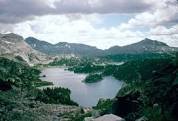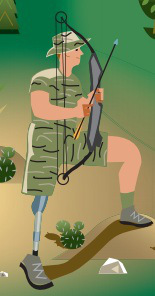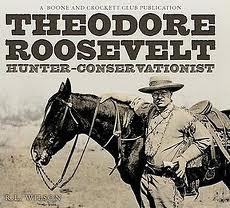 In my last blog about the frontier, I talked about the fact that what we believe was a process of wilderness settlement was probably re-settlement by whites who infected indigenous populations with disease and killed most of them off. How did this disparity between so-called civilized peoples who conquered the wilderness and so-called uncivilized people who inhabited the wilderness come about? After all, it was this disparity, - steam and steel versus wood and clay – that allowed us to believe that the frontier marked the border between civilization and wilderness. In fact, it was our encounter with ‘savages’ (i.e., uncivilized people) that was the proof that wilderness could still be found.
In my last blog about the frontier, I talked about the fact that what we believe was a process of wilderness settlement was probably re-settlement by whites who infected indigenous populations with disease and killed most of them off. How did this disparity between so-called civilized peoples who conquered the wilderness and so-called uncivilized people who inhabited the wilderness come about? After all, it was this disparity, - steam and steel versus wood and clay – that allowed us to believe that the frontier marked the border between civilization and wilderness. In fact, it was our encounter with ‘savages’ (i.e., uncivilized people) that was the proof that wilderness could still be found.
This disparity goes back to the domestication of animals and plants. Prior to domestication, humans were no different from any other animal species, forced to forage for foodstuffs and move from place to place whenever they consumed more plants or animals than could be reproduced by nature in the area where they happened to be. Once food could be increased without depending on the natural cycle, humans could cease migrating, develop permanent communities and most important, experience increases in population beyond minimal levels.
This did not mean that civilized communities were yet totally liberated from the natural replacement of foodstuffs; in fact, famines still break out to this day. But the problem had been definitively resolved in the eastern half of the United States by the middle of the nineteenth century, and as white settlement pushed further into the western frontier, the natural cycle of plant and animal replenishment that governed the existence of indigenous peoples was replaced by commercial farming and herding whose benefits had nothing to do with the relationship of humans to the wilderness at all.
Enter the sportsman-hunter, in the form of elite easterners like Teddy Roosevelt and George Bird Grinnell. They didn’t view wildlife as a means of subsistence, killing wild animals was challenging and fun. Roosevelt owned two cattle ranches in North Dakota and Grinnell bought a cattle operation in Montana. Both operations supplied food to urban, i.e., civilized communities back east. Meanwhile, wilderness game quickly began to disappear. Roosevelt remarked on the scarcity of big game when he spent nearly three weeks trying to shoot a trophy brown bear so that he could display its stuffed head back in New York.
The conservation movement that hunters like Roosevelt and Grinnell founded in the 1890s wasn’t an effort to save the wilderness or roll back the frontier. It was seen as a necessary effort to regulate hunting so that game birds and animals would survive in areas where the natural balance between man and nature had disappeared. The early conservationists weren’t conserving wilderness, they were protecting enough habitat to support the natural cycle of animal replenishment that was required for the enjoyment of their sport.
Now enter the environmentalists who started to subsume the conservationists after World War II. Whereas the traditional conservation movement was rooted in the idea of preserving habitat, the environmentalists, beginning with Rachel Carson, moved towards protecting the larger environment from man-made pollutants and industrial-residential projects. Thus, the definition of what required protection shifted from animal habitat to human habitat, from preserving where animals roamed to safeguarding where people lived.
But threats to human habitat were not so much ecological as political. Decisions about where to build highways were political decisions, as were decisions to purify water, create landfills and clean the air. The environmental movement fed off of civil rights protests, nuclear testing protests and the grand-daddy of them all, the anti-war movement. In the process, particularly when environmentalism morphed into global warming, the concerns and needs of hunters were swept aside.
And who embraces hunters and never misses an opportunity to remind them of the important role they played in building our great country and conquering the frontier? You guessed it: the National Rifle Association whose defense of the 2nd Amendment is a brilliant ploy to capture the hearts and minds of hunters like the ones whom President Obama accused of “clinging” to their religion and their guns.
Hunters and environmentalists may think they have little in common with each other, but in fact both groups may be living a myth that still endures. It was eastern elitists like Roosevelt whose passion for hunting bequeathed the notion of habitat protection to modern-day hunters decidedly not from the upper class. Meanwhile, it’s today’s elitists, the environmentalists, who seek to protect a wilderness that may have disappeared long before Roosevelt and his friends hunted it away.
This is the second part of a three-part series on hunting and conservation which will form a book to be published by the end of this year.
Related articles
- Could TX Hunting Actually Help Save These Endangered Species? (theblaze.com)
- Theodore Roosevelt and Conservation (tr1twenty2.wordpress.com)


Recent Comments